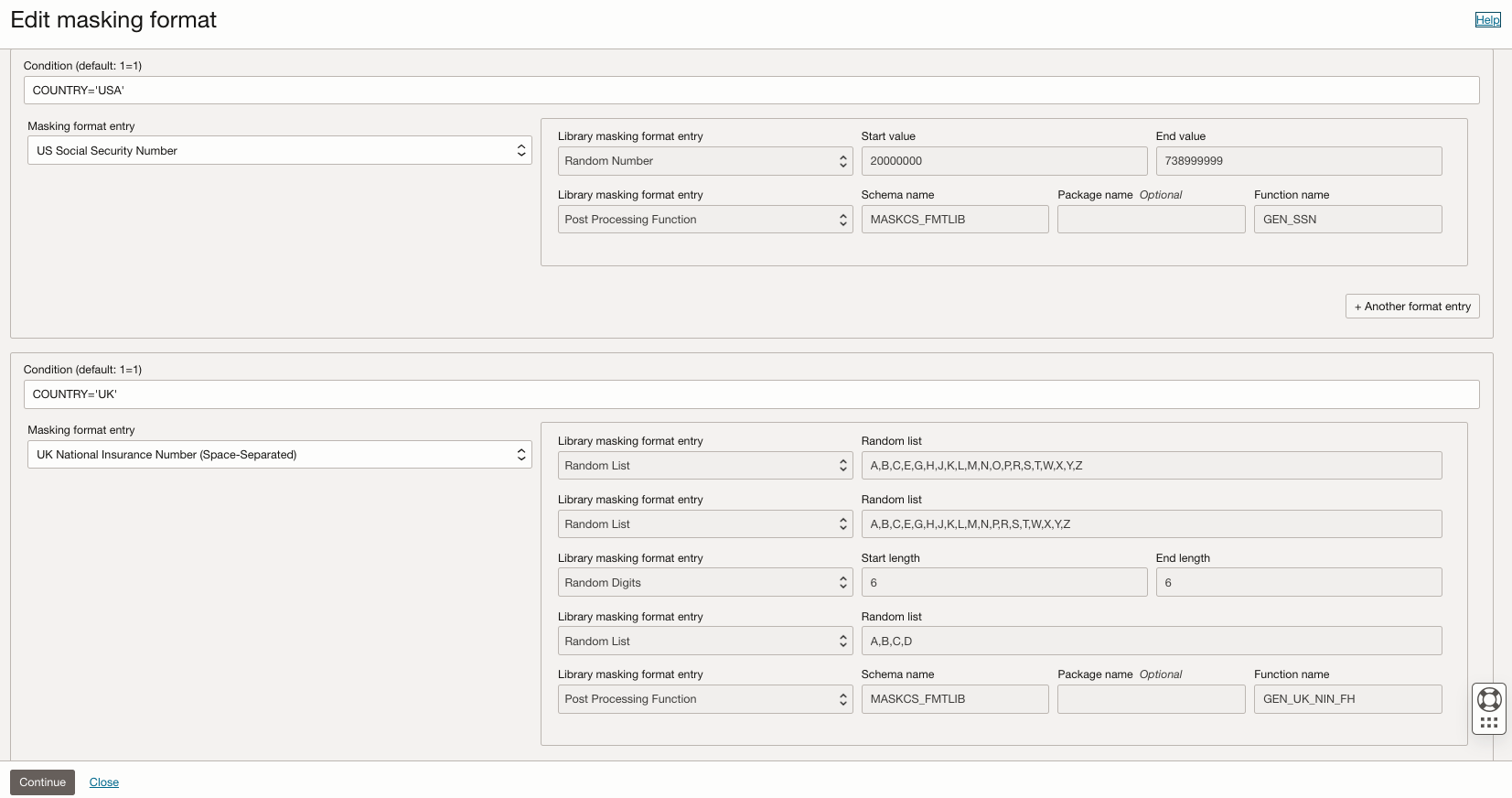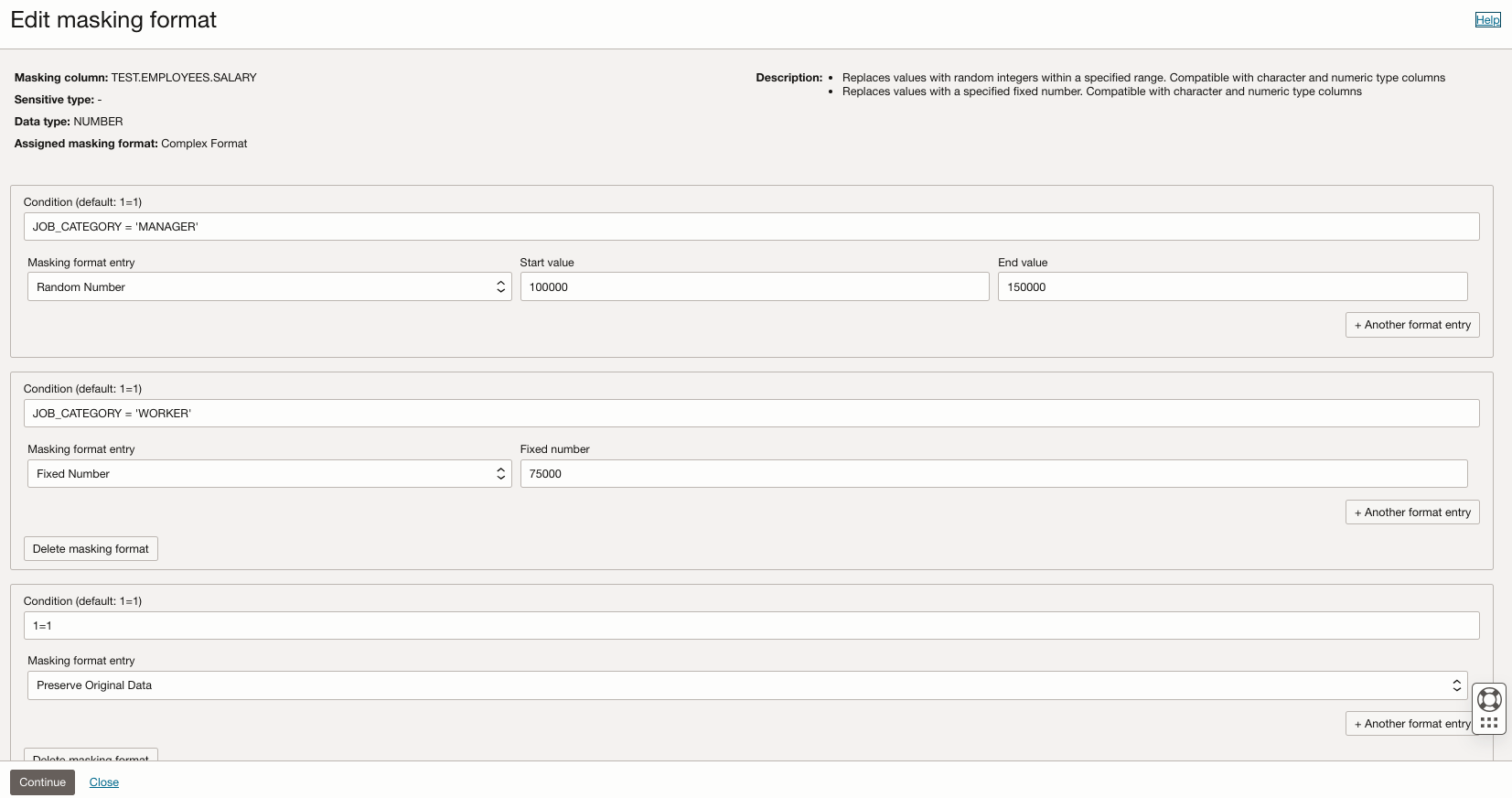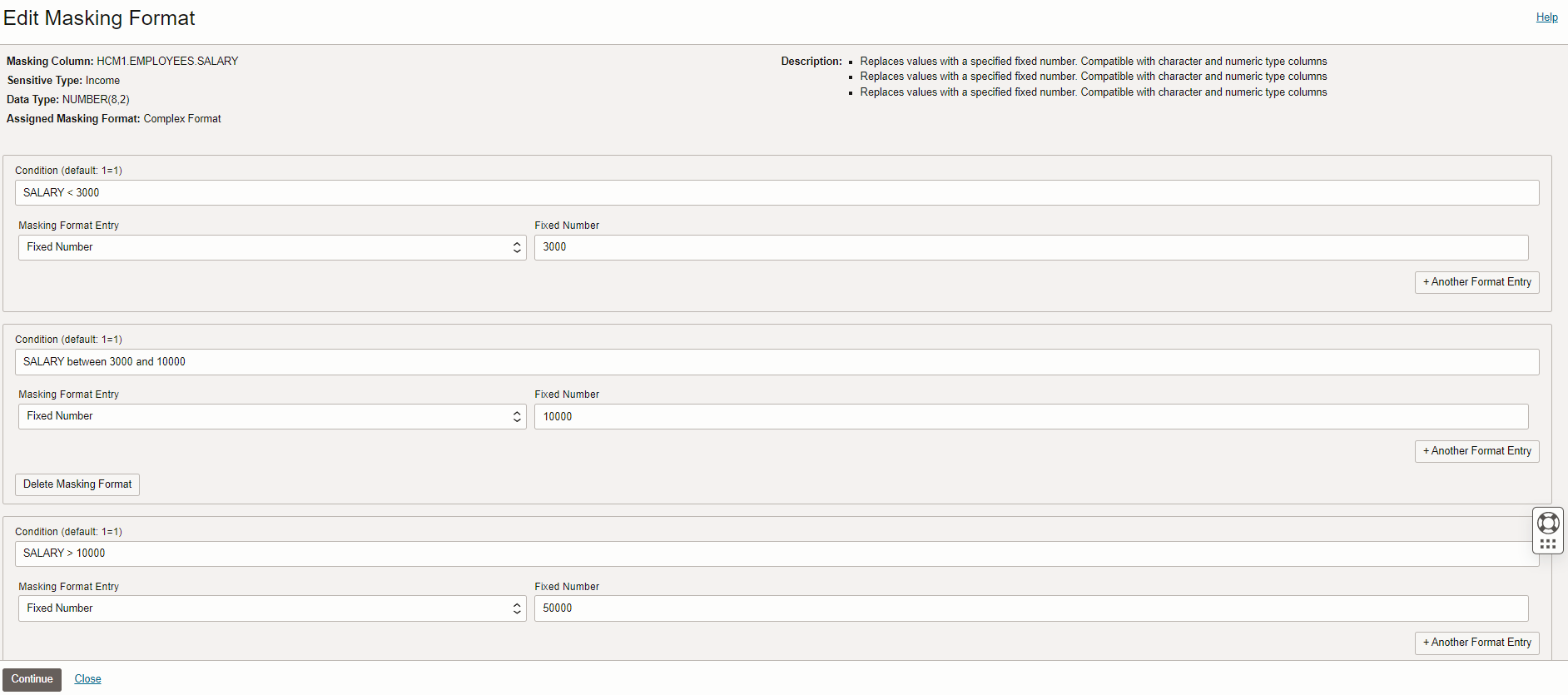Conditional Masking
Conditional masking allows you to set multiple logical conditions that alter the masking format of a masking column. Conditional masking can only be done when editing an existing masking format of a masking column in a masking policy.
Example 1: Protecting Sensitive Identifiers Across Diverse Geographic Regions
Learn how conditional masking can be used to mask unique personal identifiers based on country.
Problem
A large organization manages a database containing personal identifiers such as Social Security Numbers, National Insurance Numbers, and so on from individuals living in various countries. They are required by regulations and data protection laws to safeguard the sensitive information while having to maintain usability for authorized purposed. However, sharing this data for testing, development, or analysis poses significant privacy risks.
Solution
By utilizing Data Masking available in Data Safe, the organization is able to assign the appropriate masking formats to the personal identifiers to meet the privacy regulations. Using conditional masking allows for the masking format to change based on the country of residence listed in the database.
Consider the database contains the following information:
Table 7-1 Employee Personal Identifiers, Pre-Masking
| Employee | Country | Identifier |
|---|---|---|
| Alice | US | 987-65-4320 |
| Bill | UK | BH 123654G |
| Carol | UK | AJ 763482K |
| Denise | US | 798-66-4329 |
Following the implementation of a conditional masking format conditional on the country, the database may look something like the following:
Table 7-2 Employee Personal Identifiers, Post-Masking
| Employee | Country | Identifier |
|---|---|---|
| Alice | US | 674-58-2371 |
| Bill | UK | PA 123456C |
| Carol | UK | AB 987654B |
| Denise | US | 543-23-5431 |
Benefits
- Prevents unauthorized access to sensitive personal identifiers.
- Complies with diverse regional privacy laws and data protection requirements.
- Preserves data integrity and usefulness for authorized activities, such as testing and analysis.
- Reduces the risk of data breaches and potential harm to individuals.
- Enables secure data sharing for collaboration and knowledge advancement.
Related Topics
Example 2: Protecting Sensitive Salary Data Across Different Employee Groups
Learn how conditional masking can be used to mask salary data based on an employee's role.
Problem
A company needs to analyze salary data to identify potential pay gaps between different employee groups, but is unable to share actual salary figures due to internal privacy concerns or competitive reasons.
Solution
By utilizing Data Masking available in Data Safe, the company is able to create a pseudonymized dataset suitable for salary disparity analysis. Using conditional masking allows for the original salary data to be masked by a random number in a specified range based on the employee group.
Consider the database contains the following information:
Table 7-3 Employee Salary Data, Pre-Masking
| Employee | Job Category | Salary |
|---|---|---|
| Alice | Manager | 90,000 |
| Bill | Manager | 88,000 |
| Carol | Worker | 72,000 |
| Denise | Worker | 57,000 |
| Eddie | Worker | 70,000 |
| Frank | Worker | 45,000 |
| George | Assistant | 45,000 |
- If job category is Manager, replace salary with a random number from 100000 through 150000.
- If job category is Worker, set salary to a fixed number (75000).
- Default is to preserve the existing value.
The database may look something like the following:
Table 7-4 Employee Salary Data, Post-Masking
| Employee | Job Category | Salary |
|---|---|---|
| Alice | Manager | 100,200 |
| Bill | Manager | 132,000 |
| Carol | Worker | 75,000 |
| Denise | Worker | 75,000 |
| Eddie | Worker | 75,000 |
| Frank | Worker | 75,000 |
| George | Assistant | 45,000 |
Benefits
- Protects individual employee salary information while enabling analysis of potential pay gaps between different job categories.
- Maintains data utility by creating a masked dataset that retains the statistical properties necessary for identifying salary disparity trends.
- Supports internal fairness by enabling data-driven decisions to promote fair compensation practices within the organization.
Related Topics
Add Conditions to a Masking Format
See the steps and examples below to implement conditional masking formats in your masking policies.
- Under Security center, click Data masking.
- Under Related Resources, click Masking policies.
- Click the name of a masking policy.
- Locate the row for the column for which you want to add conditional masking in the Masking Columns section.
- Click the pencil icon to edit the masking format.
- Enter the desired condition in the Condition field, removing the default condition 1=1.
- Select the Masking Format Entry.
- Fill out any additional fields related to the selected masking format.
- To add another condition, click Another Masking Format and repeat steps six through eight.
- Click Continue once you have set all your conditional masking formats.
Example 7-1 Personal Identifiers Based on Country
In this example the goal is to create a masking format where unique personal identifiers are masked differently based on the country that the unique personal identifiers apply to. American (USA) identifiers can be masked using the Social Security Number masking format, and British (UK) identifiers can be masked using the National Insurance Number masking format. The below screenshot shows the conditions that could be set to implement a similar conditional masking format.

Example 7-2 Fixed Salary Based on Job Category
In this example the goal is to create a masking format where salaries are masked by being set to different values based on the employees job category. The below screenshot shows the conditions that could be set to implement a similar conditional masking format.

Example 7-3 Fixed Salary Based on Salary Amount
In this example the goal is to create a masking format where salaries are masked by being set to fixed values based on the salary amount. The below screenshot shows the conditions that could be set to implement a similar conditional masking format.

Related Topics